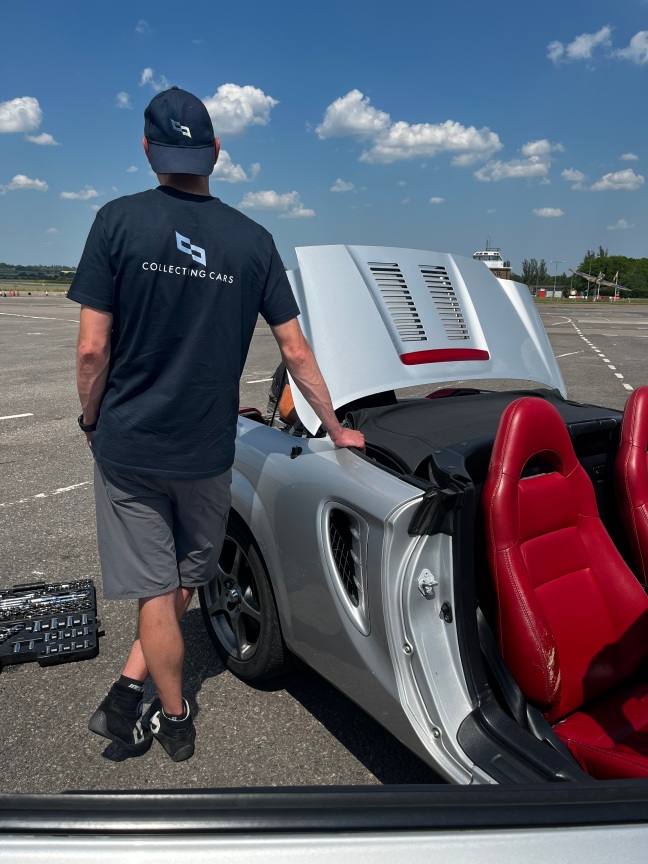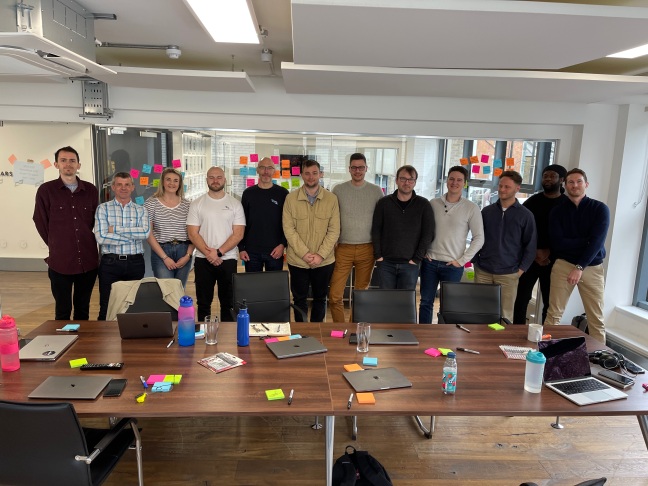1 year ago, I left my 22-year IBM career to join a startup. Everything changed and nothing changed. I’ve learnt a lot about myself.
Planning
I’ve always had a plan. Spend 5 minutes with me and you’ll likely hear it. A North Star that helps with my direction of travel. I take wins as moving North, North East or North West. With the inevitable Southern steps as part of life’s rich tapestry. It’d be boring if it all went to plan. Green lights are appreciated but not expected. How you handle reds often leads to the biggest changes in plans, life, everything…
In school, I wanted to be a pilot. I planned to join the Royal Air Force [RAF] and fly Fast Jets -> Commercial Airline-> Transatlantic Captain and Porsche Ownership. Simples! This plan unravelled as I started to progress through the RAF recruitment process. My form tutor, hoping I’d fail, took me aside as I was making reasonable progress. They sat me down and asked a simple question: “Could I kill somebody?”. As a naive 17-year-old, with the inevitable invincibility of late-teen-knowing-it-all, I was stumped. Floored by the question I sat in silence. They suggested they saw no way I could. “Had I considered applying for IBM’s Integrated degree scheme?”. You can read how that played out in my leaving IBM blog post.
Learning from IBM’s CEOs
Despite being a corporate behemoth, IBM prepared me well for joining a startup. Both need continual learning and adapting. Top-down, IBM significantly changed in my tenure. Our CEOs set the pace:
- Lou Gerstner – I wasn’t aware enough to take note of Lou when I joined. After his time I appreciated his impact. He ‘made the elephant dance’ and transitioned IBM from a declining hardware company into a growing fully integrated Services, Software and Hardware company. He set the pace of change and placed big bets.
- Sam Palmisano – Built on Lou’s approach, expanding into emerging markets and making IBM more global. He taught me to question, everything. He left IBM with 4 questions to help focus and evaluate situations. Questions I use to this day to review propositions:
- Why would someone spend their money with you — so what is unique about you?
- Why would somebody work for you?
- Why would society allow you to operate in their defined geography — their country?
- And why would somebody invest their money with you?
- Ginni Rometty – Taught a mantra of “Get comfortable being uncomfortable”. This is easier said when one of the highest compensated executives on the S&P 500. Yet, Ginni’s point was more about how she got there: her scrappy approach. She pushed herself, said yes to things that scared her and rose IBM’s ranks. Ray Dalio refers to it as go to the pain. I further learnt in this climate there are no safe bets – be bold.
- Arvind Krishna – Preached “Think like a startup”. Startup “things” started to happen at IBM. For example, “Arvind’s Office Hours” and adopting new ways of working; IBM pivoted from ageing internal processes and products. Dog food was binned instead of force-fed. Continual job cuts and strategic underinvestment pushed a mindset of how to do more with less. I learnt to leverage constraints and make the best of situations, as opposed to being hindered by them. The approach allowed IBM to transfer more risk to employees and encouraged all IBMers to raise ideas for investment.
As Ginni transferred to Arvind, my former team were well placed; our supreme manager already had us operating like a startup and making the most of what we had. From regimented documenting frameworks to back-of-envelope designs, we did the needful. We punched above our weight and built a reputation for delivering. We placed big bets and saw them through.
“Growth & Comfort Never Co-Exist”
Ginni Rometty



What hasn’t changed?
- Creating an environment where everyone can excel remains crucial. I highlighted this in my 2014 ‘Agile On The Beach’ talk and embraced it as I started adopting agile methods. Its importance is as relevant today as it was then.
- I am compensated for my experience, opinions, decisions and what I can deliver. And, my opinions still need to be loosely held. Some decisions still differ from my opinions for the good of the team/company.
- There is no room for the attitude “That’s not my job”.
- My belief in remote working remains strong, despite IBM’s wavering stance: https://www.theregister.com/2023/05/04/working_home_ibm/
- My passion for technology and building persists.
- Imposter syndrome is still a thing.
What has changed?
- When I joined Collecting Cars, The Collecting Group, I aspired to be the most technically adept individual in the room. However, my priorities shifted to becoming the most effective coach and manager possible. This was unplanned and unexpected, and I am loving it.
- Leadership, coaching, and management need a different mindset and reward a distinct set of skills in their own way. They require constant context-switching and mental juggling. For example, instead of studying technology frameworks, I am creating career frameworks. This has pushed me and taken a toll; where I used to love learning in the evenings and devouring business books and Udemy courses, things have slowed. I need to work around this and be accepting of the fact I am no longer in my 20s or 30s.
- I miss coding. I have the odd bout but realised if I am on the critical path, we move slower. I need to delegate and coach as much as possible, and stay off the critical path. This was reinforced by the awesome book ‘The Hard Thing About Hard Things’ by Ben Horowitz and David Twohig’s ‘Smoking Tyre’ podcast.
- Management has a different set of rewards compared to being an individual contributor (IC) or Tech Lead. I miss regularly developing and shipping features and fixes. As an IC, coding provided frequent wins and clear deliverables. You are programmed to produce code and deliver results. That is incredibly satisfying and makes it easy to gauge performance. In a managerial role, success is harder to gauge. It means creating a strategy that shows results every quarter or, more often, after six months. This role needs continuous change, adjustment, and reflection; feedback is the only solid reward and performance indicator in the short term.
- I actually look forward to going to the office! This is thanks to our amazing team and workspace. It was as surprising to me as the shift from my initial Technical Leadership plan.
The biggie 🧰
I learned having a plan is great, but it’s even better to build a tool kit. To learn skills and gain experience. To be in a ready state and capitalise on opportunities when they occur. John Carmack articulates this brilliantly in episode #309 of the Lex Friedman podcast; the insights shared in the last 11 minutes are invaluable. I am not anti-plan, I need the direction, but this year I have come to appreciate tool kit building.
“Once you were tethered
Well now you are free
That was the river
This is the sea!”
By Michael Scott, someone other than Bruce Springsteen


Great read Olly! 🙂 Glad to have you on the team!